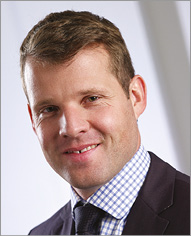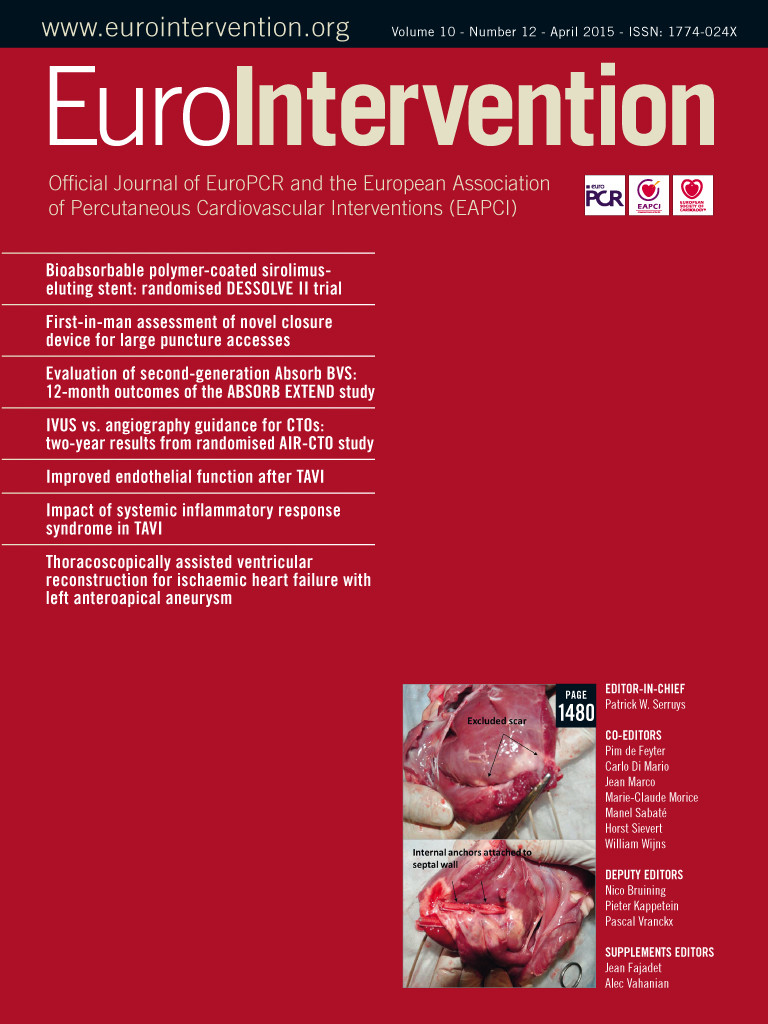NEWS
■ EAPCI General Assembly at EuroPCR 2015, Paris on Tuesday 19th May, Room 253, 18.30-19.40. All EAPCI members are invited to attend.
■ The New Initiatives for Young Interventionalists Committee has developed eight sessions for “the essentials” track at EuroPCR 2015 including BRS, left main disease, STEMI and PCI complications.
■ The EAPCI Women Committee will co-host three specially developed EuroPCR 2015 sessions: radiation burden in complex PCI, BRS to improve angina, optimising TAVI patient outcomes.
■ The EAPCI Fellows course, 19-20 June at the Heart House, Sophia Antipolis, France is designed to aid the continued development of medical doctors who have started or have recently completed a programme of training in interventional cardiology, sign up today!
EAPCI Focus on the Working Group on Interventional Cardiology of the Austrian Society of Cardiology
An interview with the President, Hannes Alber
What does the EAPCI membership mean for a national society?
The EAPCI helps us connect with other countries and exchange knowledge and information, particularly at EuroPCR. Last year, we hosted a joint session with Belgium and, in 2013, with Switzerland. At this year’s EuroPCR, we will be hosting with Hungary. These joint sessions work well and as a small country it gives us a great platform to promote our work. The EAPCI curriculum provides us with a good foundation to help us develop our speciality further. It is especially useful as it is a great source of evidence.
What are the current issues related to the national society?
From an educational perspective, in 2011 we started a special focus session for young interventionalists at our annual meeting in autumn, where these younger colleagues can present their cases to be discussed. Recently, we also introduced simulators during this session, which are a great learning tool. Last September, together with our Swiss and German colleagues, we held our second dedicated fellows meeting, DACHBOSS (www.dachboss.eu). This is a nice forum for Fellows to learn the tips and tricks of various techniques and approaches such as basic PCI, radial technique and acute PCI. We also use different simulators at this meeting.
At the present time the Austrian Ministry of Health does not recognise our subspecialty. In Austria, first you must follow six years of training in internal medicine and then two years of cardiology. After this it is possible for the graduate to enter into the “non-formalised” interventional training at their institute. Fellows also train at various centres within Austria for more specialised aspects of PCI. For instance among others Innsbruck is a centre for FFR training and Vienna is a centre for OCT training. So, in essence, Fellows go to centres of excellence within Austria to complement their training. However, plans are being developed to create a national curriculum for interventional cardiology and this is where the EAPCI may helping us. We could, as a group, also make more use of the other tools that the EAPCI/ESC offers such as the ESCel platform.
We are very fortunate that our working group set up Austria’s national cathlab registry (ANCALAR) in 1990, which is still ongoing with the great help of Prof. Volker Mühlberger. This registry provides us with essential information concerning the 37 Austrian centres (51 cathlabs). The registry is audited annually and the results are published in our national journal. As an external quality check we compare our data to the Swiss and German registry data and have found it to be comparable. For more information about this registry, please consult our Working Group website.
Our Austrian TAVI registry is ongoing and recent three-year data have been published. Initially, all interventional sites participated, but we missed a number of surgical sites. A task force from our working group together with the Austrian Society of Cardiac Surgeons were only recently able to find a consensus for a common registry platform. Compared to Germany, in Austria the uptake of TAVI is limited due to re-imbursement issues. Another innovation, BRS for PCI, is not yet standardised in Austria as we await the long-term data results to see how this technology will develop further. Nonetheless, a large BRS registry together with Germany is ongoing.

Hannes Alber, President of the Working Group on Interventional Cardiology of the Austrian Society of Cardiology
![]()
President: Hannes Alber
Vice-President: Thomas Neunteufl
Contact details: [email protected]
Austrian Society of Cardiology website: http://www.atcardio.at
Working Group website: http://iik.i-med.ac.at/
Upcoming annual meeting: Jahrestagung der ÖKG, 27-30 May 2015, Salzburg
Founded: 1968 (Austrian Cardiac Society)
Members: 185 (WG)
EAPCI members: 45

